Last year December 2021, Jan Doldersum, Chain & Retail Manager at Rijk Zwaan, celebrated a special milestone, 25 years at the company. How has Jan experienced this quarter century? What changes has he seen in the production and value chain of fresh produce, and what have been the highlights of his career so far?
Breeding evolved
Jan graduated in September 1996, having studied plant breeding in Wageningen, and he joined Rijk Zwaan on December 1 that year. "During my studies, I naturally followed all the compulsory breeding subjects. I had already started studying the fresh value chain, and that was also my first job at Rijk Zwaan in Berlin as an assistant project manager in 'IKZ' integrated chain care."
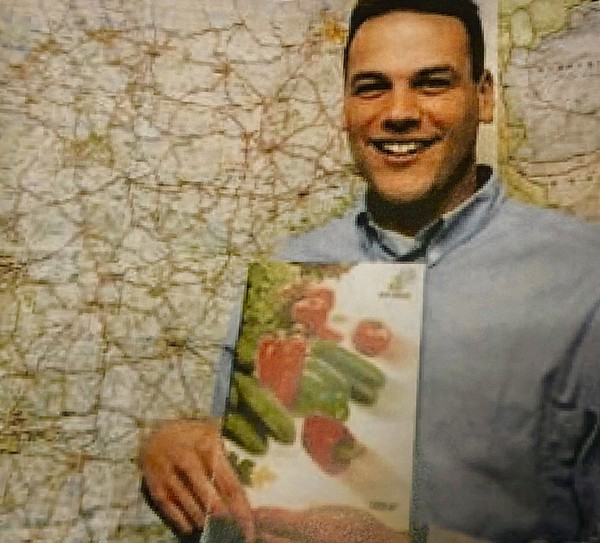
In those 25 years at Rijk Zwaan, Jan has seen a number of changes in breeding and production. "Both in terms of research technologies and speed, but also in a broader way at Rijk Zwaan – many new crops were added, and we've started breeding in a lot more countries."
Back in the days! Starting his Rijk Zwaan story in Berlin, 1996.
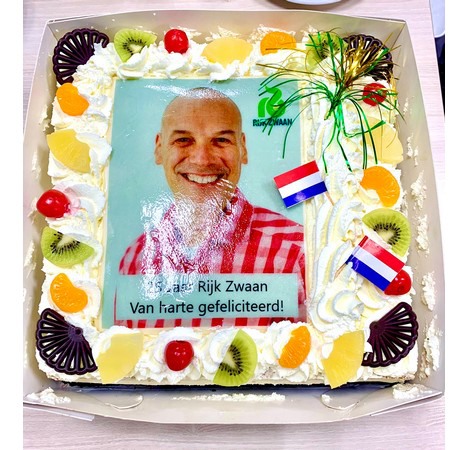
Formula 1
Jan started as employee #450 (around about), and since then, nearly 3,000 additional employees joined the company. "That's really something. And it's become such a specialist profession you can almost compare it to Formula 1. It used to be that the practical breeders did a lot themselves, but now there are all kinds of supporting laboratories and molecular techniques to make things more efficient and faster. So now it's really like professional sports, and we've been able to reduce the time to market enormously."
With certain techniques like Market Assisted Breeding, it's possible to go to the market a lot faster, for instance, with cucumber and lettuce, he explains. "With cucumber, it is now possible to breed commercial hybrid varieties within 5 or 6 years, while it used to be 10 years. And with the more complex crops, the biannual crops (carrots, brassica's, leek, etc.), the time to market has been shortened from 16-18 years to about 10."
Also, Rijk Zwaan doesn't use GMOs – it's simply not allowed in Europe (only for research purposes). "But even then, you can do a lot with techniques like double haploids. As a nice anecdote, it's all become such a specialist's job that even I have trouble keeping up when colleagues give a presentation."
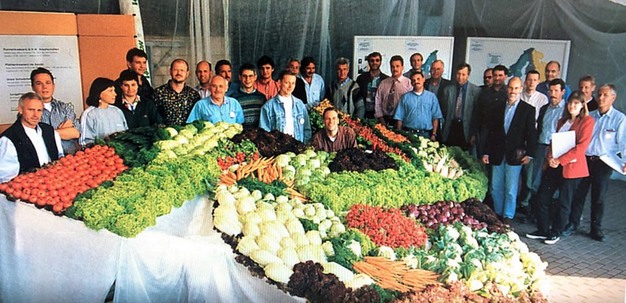
The Rijk Zwaan team celebrating the company in 1998
From farmer's son to manager
The roots of Jan are in Drenthe, a province in the north of the Netherlands. "I'm a dairy farmer's son from a family with three children, of which I'm the youngest. But taking over the farm wasn't meant for me. I just wanted to get out and about too much," he says, smiling. "But the interest in nature and food, animals and plants, is something I've had since a young age."
In his current role as Chain & Retail Manager, Jan is at the helm of a team of 25 chain/retail account managers who are active all over the world. "Together, we create a chain management strategy for our company, and we actively share best practices between the various countries. We believe in strong cooperation in the value chain and being in direct contact with retailers to better understand new trends and development in the (consumer) market and creating a demand for our innovations."
Tasty tomatoes
This year, Jan also celebrated his 25th Fruit Logistica in Berlin, where he started his career for Rijk Zwaan. "I lived and worked in Berlin from 1996 to 2000. That was the time when the first TOVs (tomato-on-the-vines) entered the German market, tomatoes that were tasty again. Dutch horticulture didn't have a great reputation at that time, but we were already working on creating flavorful tomatoes again. We had to explain the concept of vine-ripened tomatoes directly to retailers and link them with growers. That is the story we had to tell: the tomatoes are tasty again."
The purchase managers of various German retail chains needed to be convinced of Holland's new tasteful tomato varieties. "So I visited many of those, like Tengelmann, Edeka, and REWE. That was quite unusual, visiting such large retailers as a breeding company – it felt like pioneering. Consequently, retailers requested to organize a year-round production, which meant to continually meet the requirements of consumers and have the same taste experience every week of the year."
Living in Berlin was also a pleasant experience. "In that time, Berlin was really booming. I lived in East Berlin, Prenzlauerberg, and after the fall of the Wall in 1989, the city was developing rapidly. The content of the work itself was also a lot of fun. It was innovative at that time to go directly to the retailer, a strategy you now see at other breeding companies as well."
Salanova
In 2000, Jan returned to the Netherlands. "We didn't have a central marketing department at Rijk Zwaan yet, with Marketing & sales being organized elsewhere. The time was there to change that because we were developing great marketing concepts and products for the global market, often with a story for both the retail chain and final consumer. For that reason, we developed and introduced branded concepts."
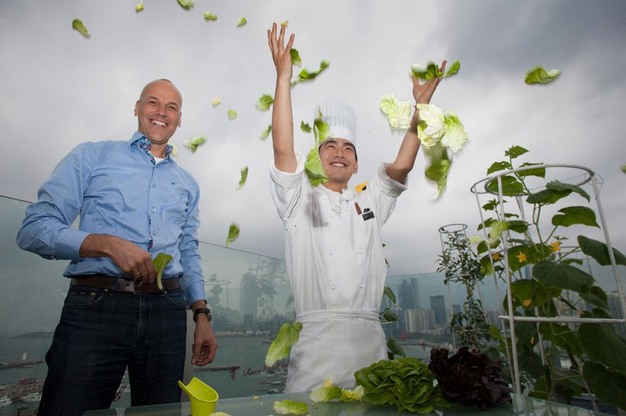 Back in the days! Salanova on display in Bangkon, in 2006
Back in the days! Salanova on display in Bangkon, in 2006
Salanova (the cut-ready lettuce) was the first of those, Jan says. "Until then, there wasn't any branded concept in the vegetable breeding market. That was really something new back then, and that's possibly also one of the reasons we won the Fruit Logistica Innovation Award in 2006. Nowadays, around 15-20 percent of our total lettuce assortment is part of the Salanova lettuce product range. So it has evolved into a success for Rijk Zwaan."
The Salanova brand has mostly remained a B2B concept, well known in the convenience and fresh-cut/processor market. But now also more and more for hydroponic cultivation. "In some countries, we even succeeded in getting it on the shelves in the supermarket under the Salanova brand."
China
Jan's wanderlust remained, and several trips to Asia made him fall in love with the continent. In 2009, he took the plunge and moved to Qingdao, China, with his family for four years. "That has been the most memorable time in those 25 years. We moved with our three children of – at that time - 2, 5, and 7 years old, and the whole family looks back on that time with great pleasure."
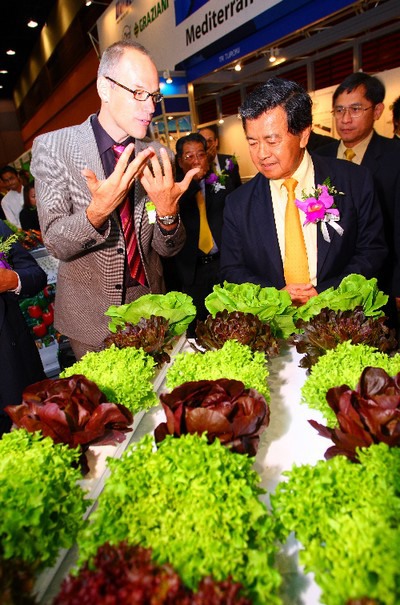
As Chain Manager Asia, Jan was responsible for business development in the fresh supply chain in a large region. "The idea was to plant the chain management seed. We had already implemented the chain strategy in Europe, but not yet in Asia, even though there was demand from the retail market, with large chains like Tesco, McDonald's, Chiquita, and Carrefour entering the Asian market."
The Chinese adventure: A RoofGarden promotion of Salanova with a Chinese Chef in Qingdao
Setting up a chain for fresh produce was pretty complex for those companies. "Rijk Zwaan was able to help out with the procurement part. Of special importance was the ability to find fresh & healthy, safe products without residues: we called this service: 'finding sourcing solutions.' That was (and still is) a really good proposition for the retailers in emerging markets."
Jan traveled a lot in that period. He spent 50 percent of his time in China and 50 percent outside of China in South Korea, Japan, Thailand, Malaysia, India, Indonesia, and the Philippines. "I was traveling a lot in those years. It wasn't always easy for the family, but it was a fascinating time in which I learned a lot."
Jan built relations for life there – business relations which Rijk Zwaan is still cooperating with today. "Building relationships is very important in the Asian culture. You have to be able to rely on the people around you. And the people there are really great. At the same time, if I were to write a book about that period, it would be called Fighting the invisible. It is very hard to discover how decisions are reached and who exactly is pulling the strings. You really need to have a local presence in those countries in order to succeed as a company."
After four years in China, Jan's children spoke Chinese fluently, and he spoke survival Chinese, as he calls it. "I could easily travel alone, order my food, ask the direction and do some small-talk."
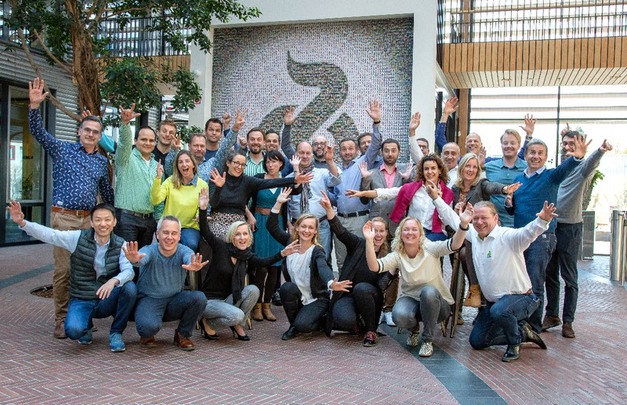
All the Rijk Zwaan chain managers at the HQ in 2019
Head of marketing
Following that Chinese period, Jan returned to the Netherlands to become head of the marketing department at Rijk Zwaan. "Together with a colleague, I became responsible for the Marketing & Business Development team. Our main task was to initiate, develop and implement new marketing concepts. Another task was to execute market and consumer research and translate market trends back into breeding."
"Since 2017, my role changed to my current position of Chain & Retail Manager as my passion is to be active in the various markets and inspire retailers to improve and innovate in their assortment to create category growth."
Proud
Looking back at his first 25 years at Rijk Zwaan, there are a few things that make Jan feel really proud. The opening of the Retail Center in Berlin, for instance. "We already had an office there, focusing on Germany, Austria, Switzerland, Scandinavia, Eastern Europe, and the Balkans. So Berlin was already an important hub for the chain management. And besides, Germany, with 82 million inhabitants as well as large retail companies, is an important market for the whole of Europe."
The Retail Center is really an experience, Jan says. "We invite retailers, traders, and growers, and we facilitate workshops, discuss the category and assortment structure, and present new innovations. And it plays an important part in doing consumer research: we want to better understand the path to purchase, consumers' motivations and consumption behaviors that make them choose within the shelf."
Winning the Fruit Logistica Innovation Award twice was also memorable – it was awarded to Salanova in 2006, and in 2017 the company won the award for Knox (delayed pinking of fresh-cut lettuce). On top of that, Rijk Zwaan won the Grüner Merkur in 2015. "And when it comes to the products themselves, apart from Salanova, I'm really proud of the Sweet Palermo (sweet pointed pepper), especially because we succeeded in getting the brand name on the packaging at various retailers like REWE in Germany & Albert Heijn in The Netherlands."
And, of course, Jan is most proud of his team. "We have really become close friends over the years. Last month (after a long period of non-traveling due to Corona), we met again in Copenhagen, and it was really nice to see the whole team again, and the team spirit is really felt everywhere. Having been a founder of that team is really amazing."
During his 25 years at Rijk Zwaan, Jan has noticed and seen many changes, trends & developments in the fresh-produce value chain. He shines a light for us on the most prominent and important developments in the market.
Fresh produce in the starring role
Possibly the most important trend for our industry is that fruit and vegetables are becoming increasingly important for retailers to stand out. "Retailers more and more want to differentiate in comparison to their competitors in their fresh product categories. Having a good product range in fruit, vegetables, and other fresh products is of strategic importance for retailers. It is also one of their most profitable categories and adds significantly to their gross margin. And therefore, retailers are looking for strategic partnerships and are open for new marketing concepts and varieties – and preferably even more exclusivity."
Expansion, consolidation, professionalization, and specialization
Over the last two decades, at all levels in the value chain, expansions, either by autonomous growth or by M&A (merger & acquisition), have taken place. The biggest tomato grower organizations in the Netherlands and USA, but also in other continents, have grown significantly, and companies larger than 100 hectares are now normal. Furthermore, Jan sees a lot of consolidation in the sector at the cultivation, trade, and retail level. "Moreover, you will get strategic dedicated supply chains. One typical long-existing example is Albert Heijn with Bakker Barendrecht. We expect more and more of these dedicated closed chains will evolve. Growers will have to anticipate that and will have to make strategic choices. Retail companies are so big nowadays that it's possible to choose one partner to supply to."
Linked to the expansion of companies, we see a much higher level of professionalization at all levels in the various companies in the supply chain. This is also due to more specialized functions and roles. Also, because of better use of big data and in growing systems, there have been enormous technological developments with now very actual robot-harvesting and vertical farms.
Consumer preferences/trends
Without a doubt, consumer preferences have changed significantly over the last two decades. A liking towards smaller and more tasteful, broader and more varied product range, convenience products, organically grown, local-for-local, health & wellbeing, online ordering, and a clear trend to sustainability (for example, less use of plastics). Besides a very fast growth of certain product categories like healthy snack range, berries, avocados, meal salads, and 'meal solutions – healthy meal boxes.'
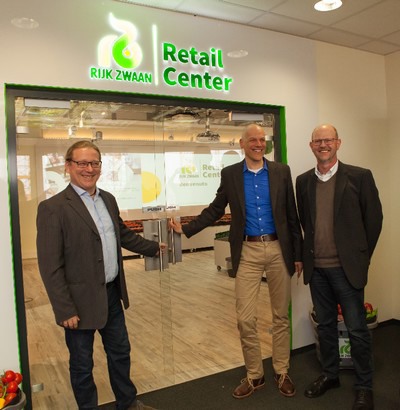
Opening the Retail Center in Berlin, 2018
Impact on current market situations
When developing a new product, the breeder also considers which retailer it would suit best. "The focus is mostly on price right now: 4 in 10 growers are worried about the future, with input costs being so high. Let's hope it's temporary, but it does have an impact on breeding innovations." Labor is also a growing problem, so as a result, the cost price has to be as low as possible.
We have to anticipate both developments: both standing out in fresh produce and lowering the cost price. "So, on the one hand, efficient growing is becoming a major trend, working with robots and harvest automation. But to create growth, you'll also need innovation in flavor, color, shelf life, product range, consumption moment, and so on."
Future perspective
Due to the various market developments mentioned, a possible scenario is that requests will come for more customized breeding or product development. "Both large growers and retail are exploring these options. So that's important to follow and to present and align Rijk Zwaan in such a way we are ready for this in the near future. We know and understand the value chain very well and do a lot of market and consumer research, so we should be equipped to share this knowledge with retailers and other key stakeholders in the chain."
For more information: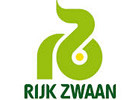 Rijk Zwaan
Rijk Zwaan
info@rijkzwaan.com
www.rijkzwaan.com
